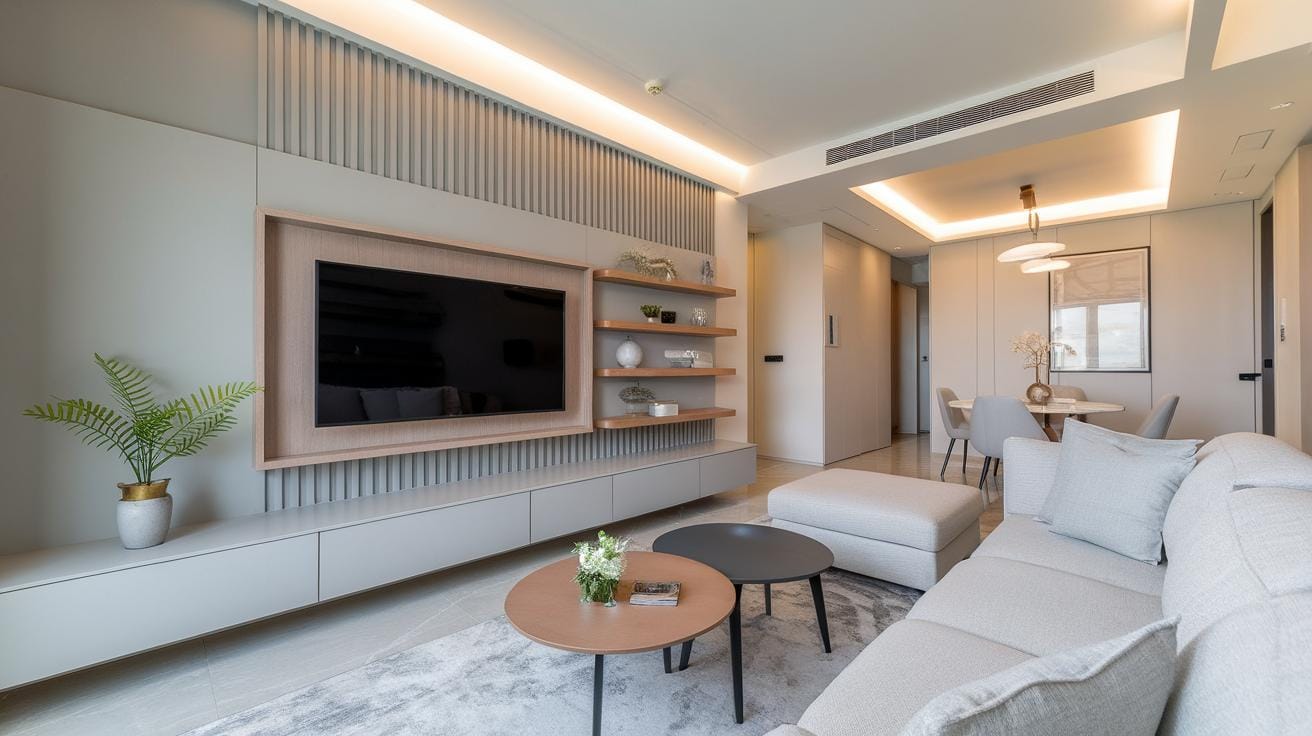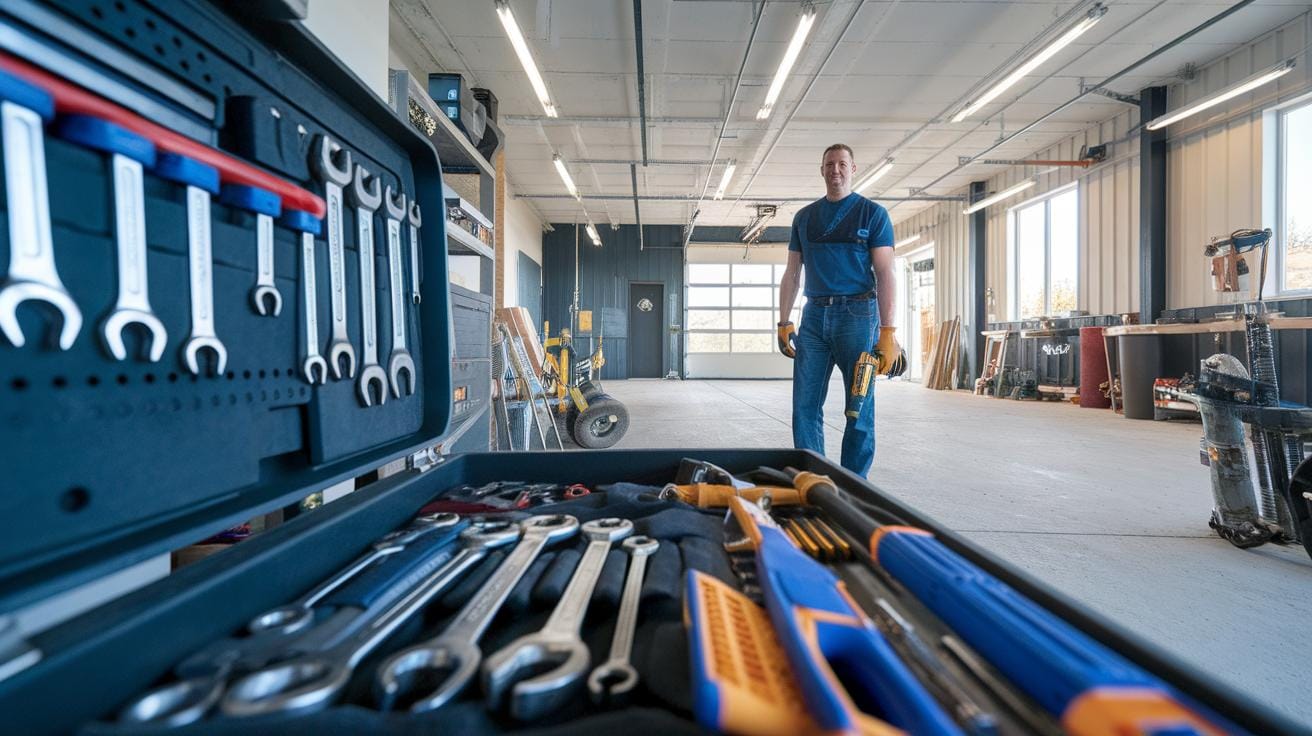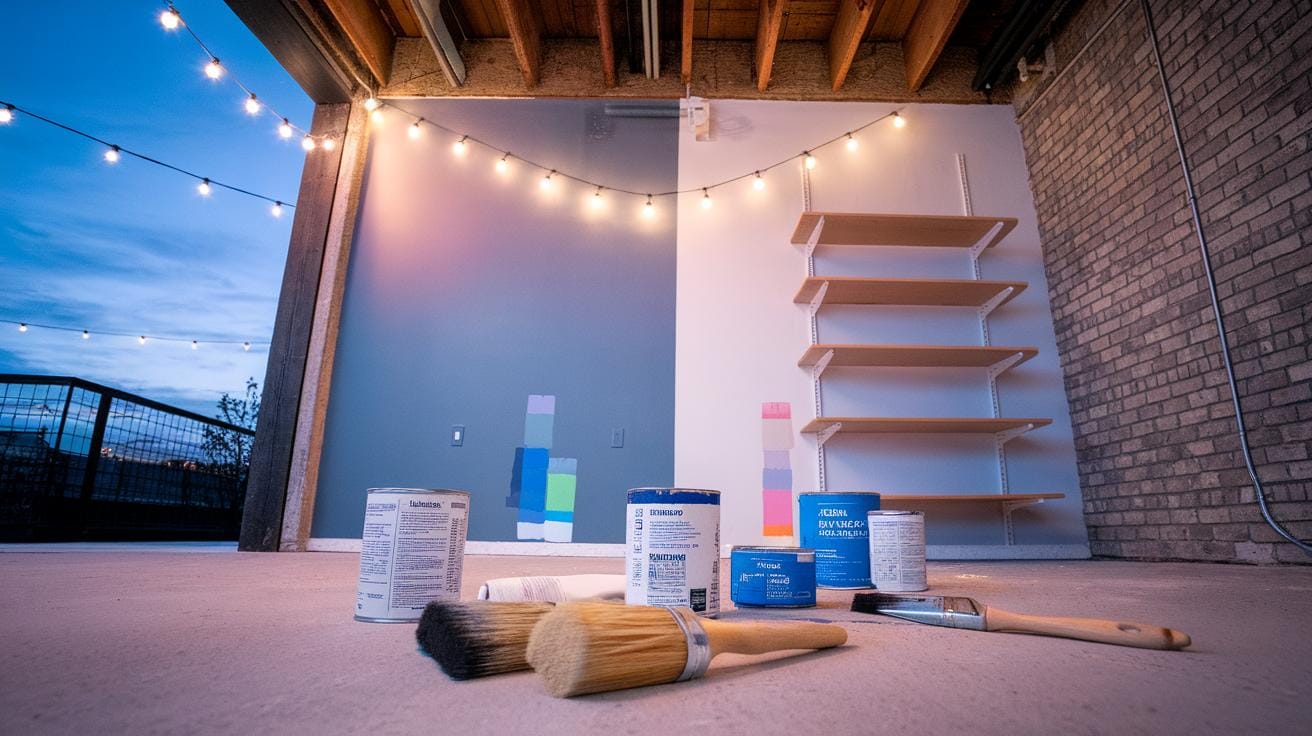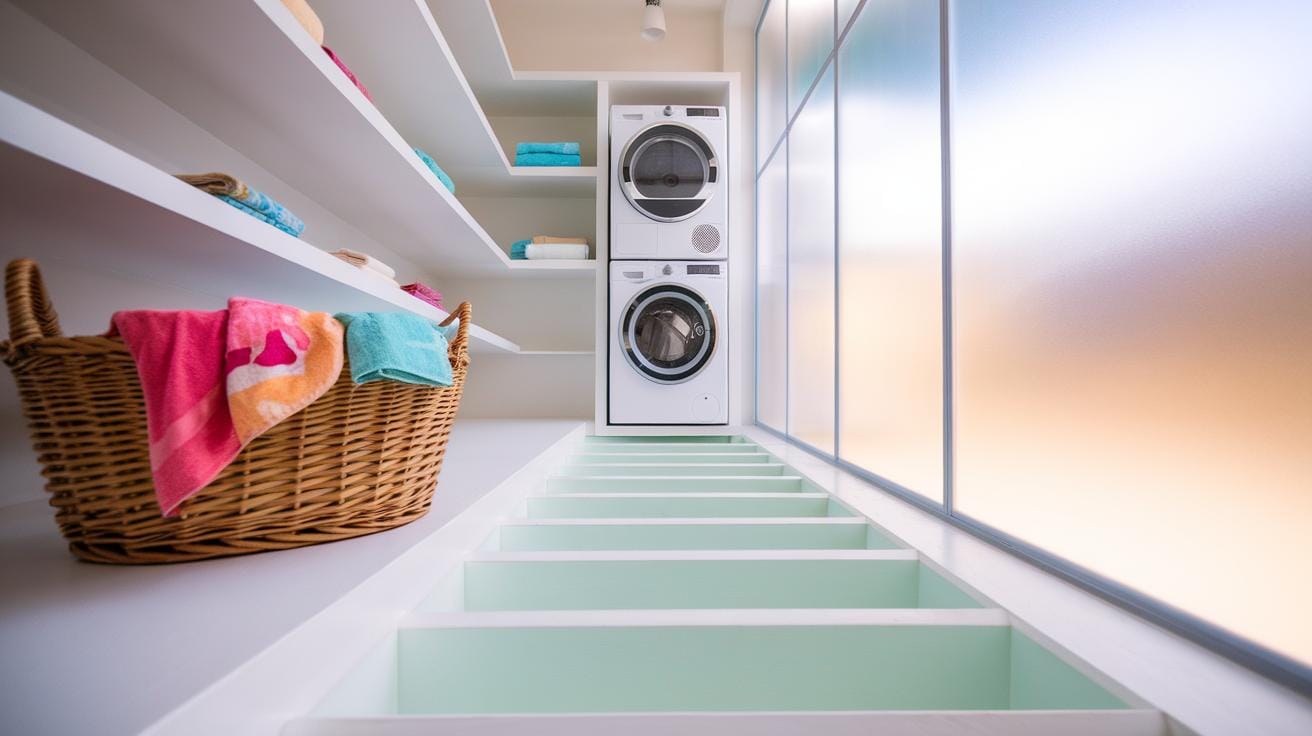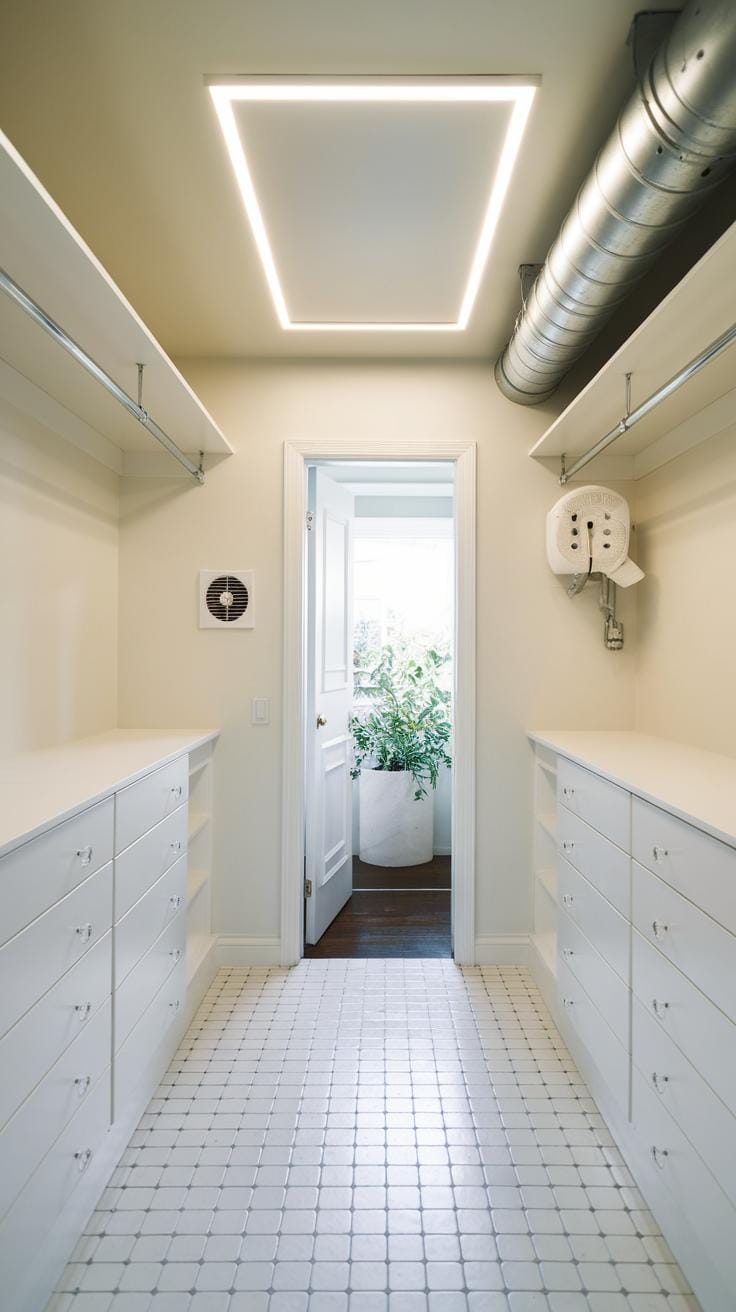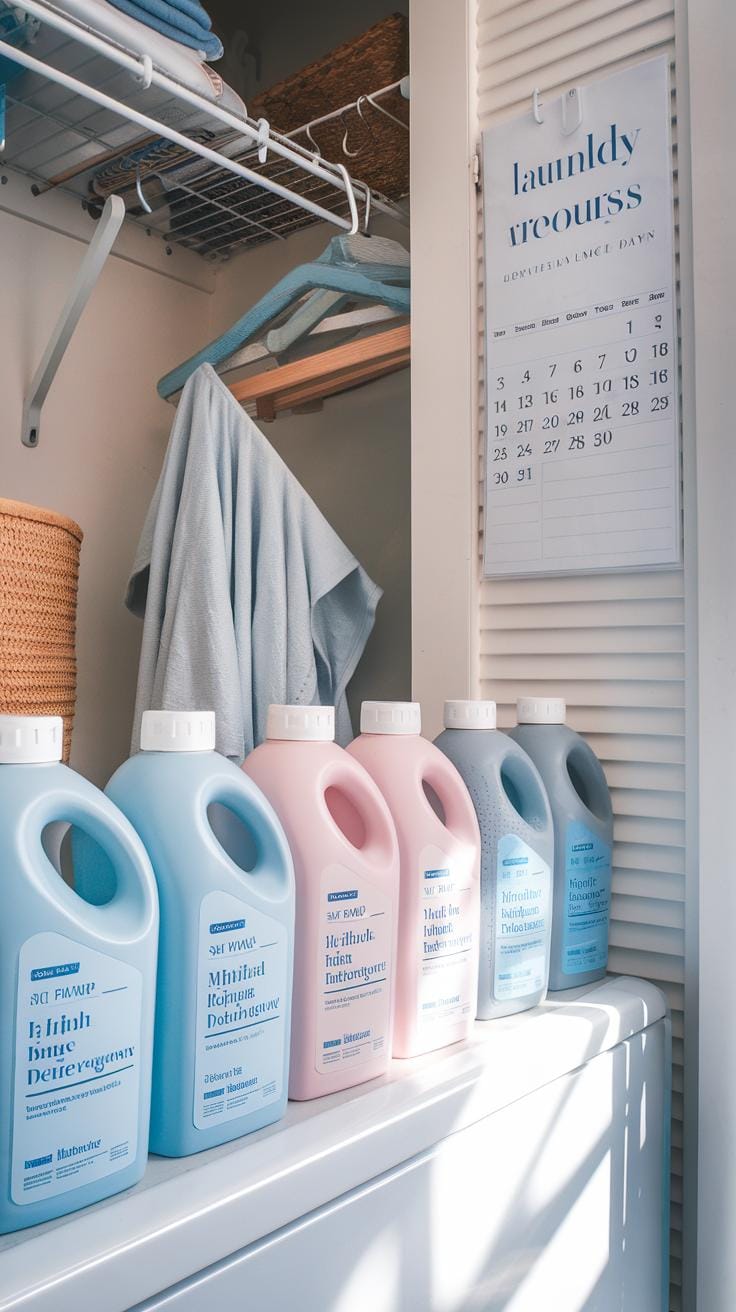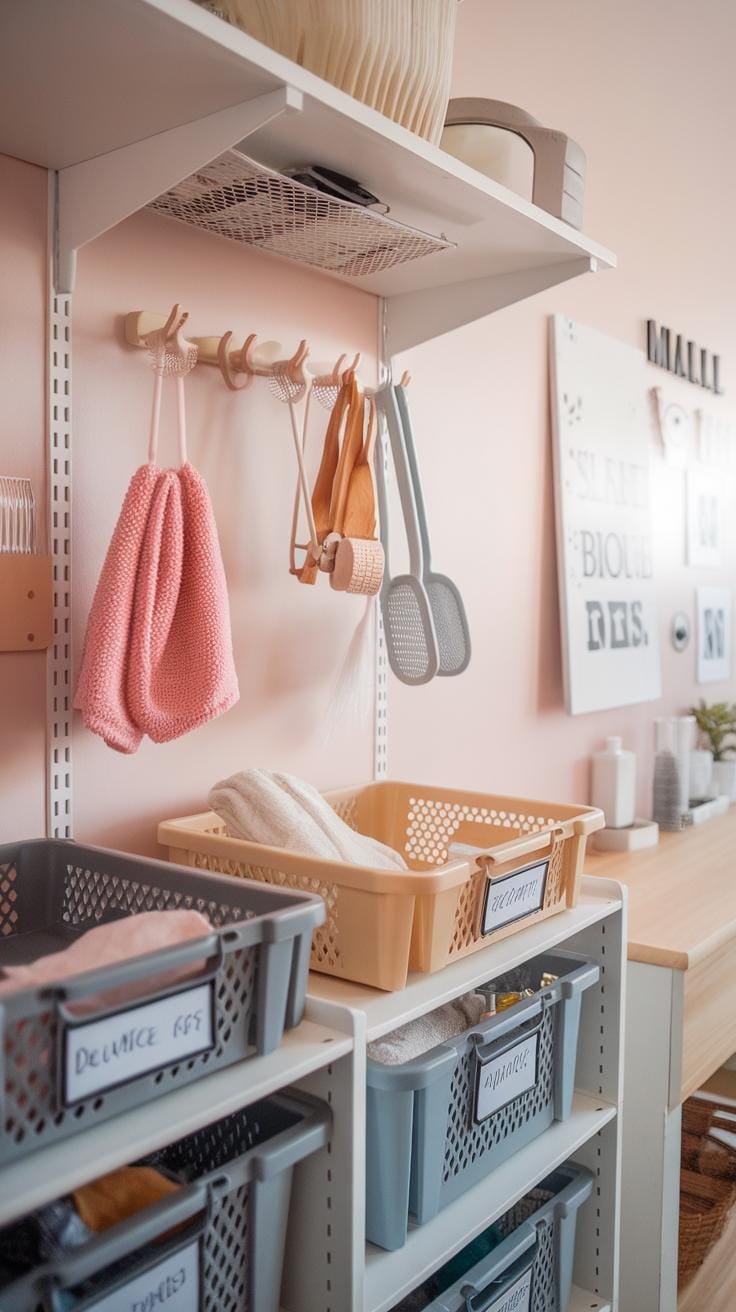Introduction
Many homes have a laundry closet that serves as a compact space for washing and drying clothes. This cozy area can become cluttered quickly without proper organization. With careful planning, you can transform your laundry closet into a highly functional and neat space. Small spaces require clever solutions to keep everything accessible and tidy. Is your laundry closet easy to navigate and use?
Finding arrangement ideas tailored for small laundry closets helps optimize every inch. Consider the tools, storage options, and layout in your space. This article reviews practical strategies you can apply. You will discover ways to store laundry products, arrange machines, and maintain order with limited room. Using your laundry closet smoothly should be simple and efficient. What steps can make your laundry routine faster and your closet more welcoming?
Understanding the Laundry Closet Space
A laundry closet is a compact space designed to hold laundry appliances and related items. It often contains a washing machine and dryer, sometimes stacked to save space. Shelves or cabinets provide places to store detergents, fabric softeners, and cleaning supplies. Some laundry closets include a small ironing board or a countertop for folding clothes. Many small homes use laundry closets instead of full laundry rooms because they take up less space.
Typical laundry closets measure about 3 to 5 feet wide and 2 to 4 feet deep but vary depending on your home. Unlike full laundry rooms, laundry closets lack extra space for sorting or drying clothes, making organization critical. Utility spaces may include plumbing and electrical access for several appliances beyond laundry needs.
Optimizing a laundry closet helps make laundry chores quicker and reduces clutter in small living areas. Before reorganizing, you should measure your laundry closet and note features like shelves, outlets, and door openings. Knowing your space’s specific size and elements helps create a plan that fits your needs and avoids wasting space.
Common Features Found in Laundry Closets
A typical laundry closet holds a washer and dryer, which may be side-by-side or stacked. Shelves often sit above or beside the machines to keep detergents and fabric softeners within reach. Cabinets might replace shelves to hide clutter and protect supplies from dust. Hooks help you hang items like reusable laundry bags, ironing boards, or cleaning brushes.
Many laundry closets also include baskets or bins to sort clothes by color or fabric type. These items support a smooth laundry routine by giving everything a specific place. For instance, having hooks for hangers can speed up drying or organizing freshly laundered clothes. The right setup lets you move through washing, drying, and folding with minimal steps.
Assessing Your Laundry Closet’s Layout
Start by measuring the width, depth, and height of your laundry closet. Write down these measurements to understand your usable space. Identify where electrical outlets and water connections are located. Check if ventilation for your dryer exists or if additional airflow is needed.
Notice how your laundry closet door opens. A swinging door might take up valuable space, while sliding or bi-fold doors can be more efficient. Observe any built-in shelves or cabinets and decide if they suit your storage needs or if rearranging would help.
By fully knowing your laundry closet’s setup, you can spot unused space or opportunities for additional storage. This careful evaluation prevents costly mistakes and ensures your organization efforts make the most of the small area.
Sorting and Decluttering Your Laundry Items
Empty your laundry closet completely to see everything you have. Take time to sort items into groups based on their purpose, such as detergents, softeners, stain removers, and cleaning tools. Remove anything you rarely use or that is no longer necessary.
Check expiration dates on all products and throw out expired ones. Duplicates often take up valuable space, so keep only what you actually use regularly. Getting rid of outdated and extra items frees up room and makes it easier to find what you need quickly.
Decluttering helps you create a clear overview of your supplies. When you only keep essentials, organizing becomes straightforward, reducing clutter and stress. What laundry products do you find yourself reaching for most often? Focus on keeping those within easy reach.
Identify What Belongs in Your Laundry Closet
Make a list of key laundry essentials to store here. Detergents, fabric softeners, stain removers, dryer sheets, and small cleaning tools belong in the closet for easy access. Items like extra towels or bulk paper goods take up valuable space and work better in a linen closet or pantry.
Prioritize placing frequently used liquids and powders on a shelf at eye level. Store stain removers and pre-treatment sprays nearby to speed up your routine. Avoid crowding your closet with items unrelated to laundry to keep the space focused and functional.
Ask yourself if each item supports your laundry daily or weekly routine. If not, consider relocating it. What small changes could make your most-used products easier to grab?
Create a Decluttering Routine
Set a regular schedule to revisit your laundry closet, such as every six months. Use this time to check product freshness and remove anything unused or unnecessary. This habit prevents clutter build-up over time.
Avoid stockpiling extra bottles just because they are on sale. Buy what you need based on actual use, not impulse. This keeps your closet lighter and more efficient.
Ask yourself if you’ve used an item in the past three months. If not, it might be time to donate or toss it. How would regular decluttering change your laundry experience?
Choosing the Right Storage Solutions
Small laundry closets demand clever storage options to keep things tidy and functional. Shelves help you store detergents, fabric softeners, and cleaning sprays within easy reach. Cabinets with doors hide clutter and protect items from dust, while open shelves let you spot supplies quickly. Baskets are perfect for holding smaller items like clothespins or dryer sheets, stopping them from scattering around. Hooks on the walls or doors offer a spot for hanging bags, brushes, or ironing boards. Bins can organize socks, delicates, or laundry pods into neat groups.
Choose storage made from durable, water-resistant materials, such as plastic or metal, to prevent damage from moisture. Wood can work if sealed properly against humidity. Consider the size and shape of your closet when selecting storage—narrow shelves fit tight spaces better than bulky units. What tasks do you perform most in your laundry closet? Pick storage that supports those needs to improve efficiency and cut down on daily hassle.
Maximize Vertical Space with Shelving
Using adjustable shelves in your laundry closet lets you tailor storage to fit all your supplies. They can hold bulky detergent bottles, stain removers, and even folded towels without wasting space. Position heavier items like detergent jugs or bleaches on lower shelves for safety and easier lifting. Place lighter things such as dryer sheets or spray bottles up high, where you reach less often.
Adjustable shelves flex as your supplies change over time, adapting to new product sizes or added baskets. Installing shelves up to the ceiling also frees up floor space for hampers or hampers. Have you measured your wall height? Adding more shelves might unlock storage you didn’t know you had.
Use Containers and Baskets for Easy Access
Clear containers and labeled baskets help you group items by category. For example, use one basket for bleach, fabric softeners, and stain removers. Another can hold small items like clothespins and dryer sheets. Labeling makes it quick to find what you need, reducing the time spent searching.
Baskets keep small or oddly shaped items from cluttering shelves. They are easy to slide in and out and can be swapped out if you need to change your setup. Picking containers with lids protects your supplies from dust and moisture. Do you find yourself digging through clutter? Clear containers let you spot what’s inside at a glance, saving time and frustration.
Optimizing Washer and Dryer Placement
Positioning your washer and dryer effectively in a small closet makes a big difference. Stacking units use vertical space, freeing floor area for storage or work surfaces. Side-by-side setups need more room but offer convenient access to both machines at once.
Ventilation is key. Both machines generate heat and moisture that must escape. Without proper airflow, you risk mold and damage. Check that vents are clear and allow enough space behind the machines for airflow and maintenance.
Maintenance access is another factor. Leave some clearance around machines to reach hoses, filters, and controls. You don’t want to move the machines out for every small fix.
Space-saving ideas include placing rolling carts or pull-out shelves next to your units. These can hold detergents and other supplies, sliding away when you need more space. What small changes could you make to improve your laundry closet’s flow and storage?
Stacked Machines Save Floor Space
Stacking your washer and dryer can free up significant floor space. This opens room for shelves, bins, or an extra counter. Many front-load models are designed to be stacked securely using a stacking kit.
Safety comes first. The stacking kit keeps machines stable and prevents tipping. Installation requires a level floor and proper alignment. Make sure your closet’s height can accommodate the stacked units plus clearance for venting and access.
Installing stacked machines often works well in narrow spaces where width is limited but height is available. You get the benefits of both worlds—efficient laundry and freed-up floor space. Could your laundry closet meet these requirements for stacking?
Side-by-Side Layouts with Added Storage
If your space allows, placing washer and dryer side by side has advantages. You gain easy access to both machines without bending or shifting items around. The open space between or on top offers a perfect area for folding or organizing laundry.
You can install a countertop over both machines to create a flat work area. This surface becomes your folding station or a temporary place for treated clothes. Some people also add slim pull-out drawers under the countertop for storing small laundry essentials.
If width is not an issue, side-by-side machines can help you stay organized and streamline laundry tasks. How might a countertop change the way you tackle laundry in your closet?
Incorporating Folding and Ironing Areas
Making room for folding and ironing in a small laundry closet can improve your laundry routine significantly. Fold-down wall-mounted tables provide a flat surface without taking up permanent space. These tables pull down when needed and tuck away easily to keep your closet clear. Have you considered how much counter space you lose when folding happens elsewhere?
Pull-out shelves offer another option. They slide out smoothly and offer sturdy support for folding clothes or sorting laundry. Once done, they push back neatly, keeping the closet organized. Compact ironing boards that attach to doors or walls save floor space and stay out of the way.
Choosing designs that fold or slide away lets you keep your laundry closet practical and functional. This approach helps you avoid clutter while still having all necessary work surfaces close at hand.
Wall-Mounted Folding Tables
Wall-mounted folding tables install easily on any laundry closet wall. When lowered, they provide enough room for folding laundry without crowding your space. The key is selecting a model that locks firmly in place while in use.
Once you finish folding, you can fold the table back up. This instantly frees the area beneath it for other tasks or storage. Many tables come with smooth hinges that require little effort to operate. Adding a cushion or countertop cover can protect garments during folding.
Would having a dedicated folding space right in your laundry closet save you time? This solution keeps clothes organized and your workflow efficient.
Compact Ironing Solutions
Small ironing boards attached to closet doors or walls fit well into tight laundry spaces. These boards fold down when in use and fold back up to stay hidden. This design prevents the ironing board from taking up precious floor space.
Cordless irons pair well with these compact boards, removing the need for bulky cords that limit movement. You can place your iron safely on a nearby shelf or built-in holder when not in use. This setup reduces clutter and keeps everything you need within reach.
Have you tried using door-mounted ironing boards or cordless irons? Their space-saving nature turns a cramped laundry closet into a functional area for quick pressing and folding jobs.
Lighting and Ventilation for Small Laundry Closets
Proper lighting and air circulation play key roles in making your laundry closet a functional, healthy space. Without enough light, it can be hard to spot stains or sort clothes properly. Installing bright LED lights gives you clear visibility and reduces eye strain as you work.
Consider using motion-sensor fixtures so the lights turn on automatically when you enter. This adds convenience and saves energy by ensuring the light is on only when you need it. Strip lights or under-shelf LED panels fit perfectly in tight closets to spread even brightness without bulky fixtures.
Airflow is equally important. Laundry areas trap moisture from washing machines, and poor ventilation can lead to musty smells and mold growth. Adding an exhaust fan or a vent duct helps remove humid air quickly. If your closet has a window, opening it after laundry tasks supports fresh air circulation, reducing moisture buildup over time.
Have you noticed dampness or mildew in your laundry space? Improving airflow can solve those problems and protect your walls and clothes. Bright lights and good ventilation work together to keep your small laundry closet comfortable and efficient.
Effective Lighting Solutions
In small laundry closets, compact lighting options offer the best mix of function and space-saving. Thin LED strip lights installed beneath shelves give consistent illumination without taking up room. These lights minimize shadows and brighten every corner where you sort and fold.
Under-cabinet LEDs are easy to install and energy-efficient, helping lower your power bill. Some models come with adjustable brightness for user comfort. Motion-sensor lights activate as you open the closet door, eliminating fumbling for switches when your hands are full.
Choosing LED lighting over traditional bulbs means longer life and less heat, which is safer in tight spaces. Can you imagine doing laundry with better visibility but without bulky lamps? These solutions keep your laundry tasks quick and clear.
Maintaining Fresh Air Flow
Moisture control in a laundry closet prevents mold and keeps the space fresh. Installing an exhaust fan vents moist air outside, reducing humidity after each laundry cycle. Fans with timers or humidity sensors switch on only when needed, saving energy.
If your closet leads to an outer wall, vent ducts provide a direct path for moisture to escape. Even a small window, when opened regularly, can significantly improve airflow. This simple act helps dry the air and lowers chances of mildew.
Ask yourself how often you check for damp spots or stale odors in your laundry area. Small steps like adding vents or fans make a big difference. Keeping air moving supports not only your laundry equipment but also the health of your home environment.
Maintaining Organization Over Time
Keeping your laundry closet neat requires consistent effort. Start by making it a routine to put every item back in its assigned place once you finish using it. This habit stops clutter from piling up and saves you time searching for supplies.
Immediately deal with spills and messes. Wiping detergent spills or lint buildup right away helps keep surfaces clean and prevents dirt from spreading.
Set reminders every few months to review the closet’s setup. This gives you a chance to adjust storage solutions based on what’s working or what’s added. Do you notice new products crowding your shelves or items you no longer need? Use these sessions to refresh and reorganize.
Daily Habits for a Tidy Closet
Small habits can maintain your laundry closet’s order day after day. Wipe shelves with a damp cloth once a week to remove dust and powder residue. Check supply levels regularly so you don’t run out of essentials or overcrowd the space with excess.
Use clear containers or labels to make finding items easier. When you spot containers running low or clutter growing, act quickly to restock or rearrange. These simple steps keep your space manageable without much effort.
Regular Deep Cleaning and Reorganization
Plan a thorough cleaning session every six months. During this time, empty the closet and clean all surfaces, including corners and behind storage bins. Use the opportunity to toss expired or unused products.
Reassess your storage needs during deep cleans. Have your laundry habits changed recently? Are there new items that need space? Adjust your organization accordingly to keep the closet efficient and clutter-free. How can you make your system better for your current routine?
Maximizing Laundry Closet Functionality
Hooks offer a simple way to keep delicate items like lingerie or mesh bags off your washer lid or countertop. When you hang these items, they dry without damage and stay wrinkle-free. Install hooks on empty walls or inside cupboard doors to use vertical space. Small tools like lint brushes, stain removers, or clothespins also find a home on hooks, so nothing gets lost in drawers or piles.
Door organizers add smart storage for laundry detergents, dryer sheets, and spray bottles. These slim pockets free up shelf space and keep your supplies visible and easy to grab. Place one on the inside of your laundry closet door, and notice how much open shelf area you gain. This setup reduces clutter and speeds up your routine by putting everything within reach.
Use Hooks and Door Organizers
Hooks prevent everyday laundry tools from cluttering flat surfaces. For example, hanging your delicates on hooks avoids crumpling and mess. Hooks also work well for hanging small bags that hold safety pins or sewing kits. Door organizers create pockets for frequently used items like stain removers or dryer balls. Instead of searching through cabinets, you access what you need quickly. These space-saving solutions keep your laundry tools visible and off counters, improving your workflow.
Divide and Conquer Zones
Designate specific zones within your laundry closet for sorting, washing, and folding. Sorting bins near the entrance help you separate colors, whites, or delicates before loading them. Locate the washing station close to your machine, stocked with detergents and cleaning supplies. Create a folding area with a flat surface or pull-out shelf where you fold clothes right after drying.
Using zones directs your movements and cuts down time spent hunting for items or shifting laundry from place to place. Have you ever lost track of a missing pair of socks or spent time searching for stain remover? Zones reduce such hassles. A well-planned workflow encourages smoother laundry days and saves effort in tight spaces.
Tailoring Your Laundry Closet to Your Needs
Your laundry closet should fit how you live and how often you wash clothes. Think about who uses it most—families usually need more space for sorting and storing detergents, while singles may focus on compact setups with easy access. Shared spaces benefit from clearly defined storage areas labeled for each person’s items to avoid mix-ups.
Consider your laundry frequency. Do you wash daily or once a week? This affects how much space you need for hampers, detergents, and folding areas. If you tend to pile up laundry, larger storage or bins can help manage the volume.
Also, reflect on the types of fabrics you wash. Sensitive clothing requires gentle detergents and specialized baskets. Heavy items like sports gear or delicate blouses may need separate storage or equipment. Adding hooks or bins for these can keep your closet organized and efficient.
Plan for Your Laundry Volume
Ask yourself how often you do laundry. Washing every day means keeping detergent and supplies within quick reach. Storing larger detergent bottles and having ample space for sorting bins will save time. Weekly laundry chores could work with fewer supplies but larger hamper areas.
Match storage to your load size. Small loads fit in modest baskets, but big families might need extra bins or shelves. Plan shelves and drawers to hold enough products without clutter. Counting laundry baskets, sprays, and tools before organizing stops wasted space.
Adapt for Special Laundry Requirements
If you wash delicate items often, add storage for mesh bags and gentle detergent bottles. Pets’ laundry may need separate hampers and sanitizing sprays nearby. Large bedding or bulky blankets need roomy shelves or hooks to hang and dry.
Think about special tools you use, such as fabric shavers or stain removers. Keeping these visible and organized helps you work quicker. Customize your closet by identifying your unique laundry tasks and storing everything so it’s easy to reach and use.
Conclusions
Organizing a laundry closet effectively enhances your home’s functionality. You gain practical benefits like quicker laundry routines and reduced stress from clutter. Keeping items neat and within reach prevents frustration. Good organization also protects your machines and cleaning products, helping them last longer. Taking time to set up smart storage choices pays off every laundry day.
Small laundry closets are no obstacle to creating a usable, ordered area. Focus on your space’s unique layout and needs. Choose storage solutions that fit your habits and keep essentials easy to find. Maintenance is key: tidy up regularly to avoid build-up. With these approaches, your laundry closet will serve you well and free your mind from disorder. What will you change in your laundry area first?

![CLOUDY BAY [6 Pack] 6inch Smart WiFi LED Recessed Lights,RGBCW Color Changing Recessed Lighting,Compatible with Alexa and Google Home Assistant,No Hub Required,15W 2700K-6500K,CRI90+ Wet Location](https://m.media-amazon.com/images/I/41H5465vC2L.jpg)


